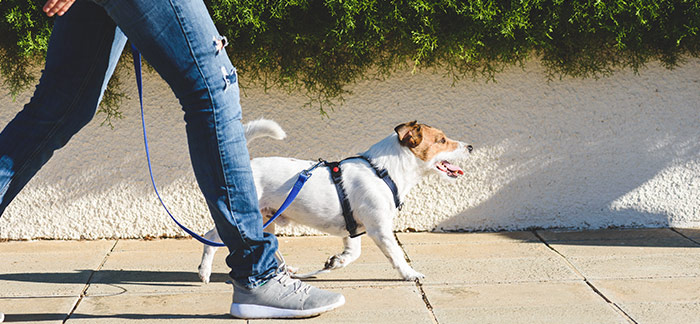|
After weeks of isolation it’s important to get back on your feet and one way is to – literally - walk your way to health and fitness.
Walking can be incredibly effective as an inexpensive form of exercise and here is how to start:
|
|
Getting started
|
|
If the only walking you’ve been doing is to the fridge and back, make sure you don’t push yourself until you’re breathless. Instead, start by pacing yourself so that you can still talk while you walk.
Warm up by walking slowly and then pick up the speed. Don’t bounce or jolt when you walk or you could overstretch muscle tissue and cause microscopic tears, which lead to muscle stiffness and tenderness.
The wrong shoes or walking action can cause shin pain and blisters so make sure footwear provides enough cushioning. Take light, easy steps and make sure your heel touches down before your toes.
After your walk, gently stretch your leg muscles – particularly your calves and front and back thighs.
|
|
How many steps?
|
 |
|
Although 10,000 steps a day is a great target to aim for, any exercise is better than none, so start where you are and take it from there. If, for example, you currently clock 4,000 steps a day, a new 30-minute walk is likely to add on around 3,000.
Walking burns calories too: 10,000 steps will trim off 250 and 600 calories, while a 30-minute walk will use up between 100 and 200 calories. Plus, the more you weigh and the less fit you are, the more calories you burn!
There are also health benefits to walking, such as a lower risk for heart disease and cancer, less depression and fatigue, reduced stress on joints and accompanying joint pain, and improved circulation.
|
|
Hit the road
|
|
Walking is just as great for your mental health. We are wired to connect with others and a long walk with a friend can soothe the soul. If you are now able to get outside, ask neighbours or friends if they would like to join you for a “virtual walk” and hook up via a WhatsApp call en route. If you pace yourself, you should be able to talk and walk at the same time – challenge your buddies to see who can cover the most distance on their solo stroll!
A solitary meander can be equally meaningful, particularly if you focus on being in the moment - apps like Calm and Headspace have guided walking meditations.
Still stuck inside? Count the number of paces you need to walk between each room in your apartment, or to go round your house, and build your own “lockdown” circuit.
|
|
How far should I walk?
|
 |
|
You can download a step-tracking app or pedometer to your smart phone – keep record of how many steps you take before you start your walking programme and gradually build up. Try this two-week “beginners” plan:
|
|
WEEK 1
|
- Day 1 - Begin with an easy, 5-minute walk to warm up, then maintain a brisk, steady, walking pace for 10 minutes. Cool down for about 5 minutes as your breathing and heart rate return to normal.
- Day 2 - As above, but maintain the brisk pace for 15 minutes.
- Day 3 - As above, but maintain the brisk pace for 20 minutes.
- Day 4 - Interval walk of 30 minutes. Begin with an easy, 3-minute walk to warm up, then use this 3-2-1 interval structure repeated a total of 3 times for 18 minutes of interval work:
- 3 minutes: Walk at a brisk, but steady, pace
- 2 minutes: Amp up your speed and intensity for a stronger, but still steady, pace
- 1 minute: Power up your pace as fast as you can, pumping your arms quickly to propel you faster.
- Cool down for about 3 minutes and stretch out your muscles.
- Day 5 – Repeat Day 1
- Day 6 – Repeat Day 2
- Day 7 – Repeat Day 4
|
|
WEEK 2
|
- Repeat WEEK 1 but add 5 minutes on to each day’s brisk pace. For the interval walk, repeat the 3-2-1 interval structure 4 times.
(Remember to check with your doctor before you start, particularly if you have knee, ankle or back issues, are overweight or haven’t exercised in a long time.)
Before you know it, you’ll be itching to stride out onto a trail or take a longer hike, or perhaps even step it up a notch and go for a run. If you are starting from scratch, however, take it slowly and then move onto a combination of walking interspersed with just a few minutes of running.
As the old adage goes, you have to learn to walk before you can run!
|
|

